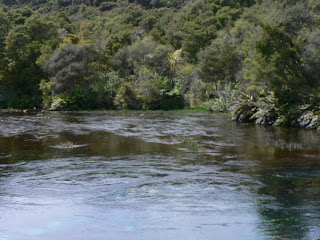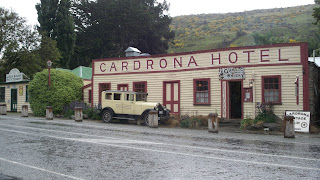 Another lovely day in this very sunny area. In fact all of NZ is basking in sunshine at the moment and it is difficult to imagine the extreme coldness on the other side of the world.
Another lovely day in this very sunny area. In fact all of NZ is basking in sunshine at the moment and it is difficult to imagine the extreme coldness on the other side of the world. Today Gordon and Margaret took us on a beautiful drive through valleys, past wineries and orchards and to the most beautiful beaches.
Today Gordon and Margaret took us on a beautiful drive through valleys, past wineries and orchards and to the most beautiful beaches. We went up to the beginning of the Abel Tasman track, a 51km three to five day track which is meant to be one of the most scenic in the country, passing through ntive bush overlooking golden beaches lapped by beautiful blue water. Of course you can cheat and take a boat up the coast and just walk sections of the track.
We went up to the beginning of the Abel Tasman track, a 51km three to five day track which is meant to be one of the most scenic in the country, passing through ntive bush overlooking golden beaches lapped by beautiful blue water. Of course you can cheat and take a boat up the coast and just walk sections of the track. 

I am thankful that this bull was wooden!










 This is their largest appartment. And the view of the mountains from the top is fantastic.
This is their largest appartment. And the view of the mountains from the top is fantastic. 
 The front steps with Ping looking up.
The front steps with Ping looking up.






























 We went across on the Catamaran which is extremely small compared to any other ferry I have travelled on. The trip across took one hour and covered a distance of 26 km. However the strait between the island has one of the roughest seas around. Luckily it was very calm and we had a lovely trip. Once there we went on a short bus tour (32 km of road, and then walked for 2 1/2 hours out to a point. It is a most beautiful island. Most of it is covered in a national park.
We went across on the Catamaran which is extremely small compared to any other ferry I have travelled on. The trip across took one hour and covered a distance of 26 km. However the strait between the island has one of the roughest seas around. Luckily it was very calm and we had a lovely trip. Once there we went on a short bus tour (32 km of road, and then walked for 2 1/2 hours out to a point. It is a most beautiful island. Most of it is covered in a national park.
 We have spent a large amount of time with the family, which has been fantastic and have been lucky to be here for two birthdays. We have also eaten lots of food so will need to go on a diet when we return.
We have spent a large amount of time with the family, which has been fantastic and have been lucky to be here for two birthdays. We have also eaten lots of food so will need to go on a diet when we return. 